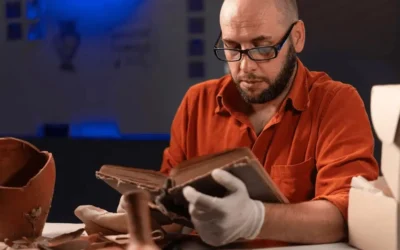Change and Continuity with Analog and Digital Records
Margot Note
Two major events affecting archives and records management have occurred. The basic principles, while still valid, need to be adapted to the contemporary information environment. The world in which archival procedures implement those principles has changed.
Technology has complicated the processes for creating and managing records, and the environment in which archival management takes place has changed as well.
Past Practices
Physical archival practices were built on the model that incorporated the following principal points. Firstly, recordkeeping procedures explained at a business process level what documents needed to be included in official files for each business process. There were also gatekeepers, such as secretaries, file clerks, and file custodians who were trained in records management and who knew how to interpret the rules and storage areas for the official files. In addition, records were routed through these custodians, who kept all the official files in central locations.
Anything not in the central file was not an official record. Materials that were not considered to be official records were left to individual employees to manage. The assumption was that these had no broader organizational value and employees could manage them as they wanted, provided that the records did not overflow the space in the employee’s cubicle. Is it no surprise that archivists often find that employees take records home and keep them in the basement or garage?
Keeping Up with Technology
There are business processes in which these principles still hold, but many business processes are not well enough defined to achieve this level of management. Employees do not do this very well for many reasons, but principal among them is that they do not believe managing information is part of their job. Clear guidance is lacking. Records management practices have not kept up with the technology that creates records. For example, archivists and records managers now create policy via wikis, but the guidelines speak about collecting and analyzing comments on drafts circulated for review. Employees find records management software complicated and hard to use and frequently refuse to use it.
A basic example of the problems information professionals face in archives and records management is that traditionally the informational value of records expired before its legal or administrative value did. Exceptions existed, but it was not easy to repurpose and reuse since the information was frozen in hard copy form. Hence it was considered disposable. It was also more controlled because if nothing else, one had to create hard copies of anything to be distributed, and that took work. Assigning retentions and dispositions to records met little resistance from employees, who did not find the older records useful.
The Game Changer
Everything changed with electronic records. Electronic records are easy to disseminate and remain useful as reusable information long after their legal and administrative values may have expired. Add to that the ability to store vast amounts of information on small storage devices and the lack of any uniform process for identifying and describing records. Copies and versions may abound for documents, with no clear information identifying the final document. As a result, archivists and records managers now face gigabytes of undescribed, unstructured data and documents sitting on shared drives and removable media. At one point that may have been an irritant, but not a significant problem. But in an increasingly litigious society, worried about compliance, these unmanaged records or information assets are either unexploited resources, unexploded land mines, or both. The pressing need to find ways to restructure information management to meet the challenges of the twenty-first century is why the field remains of interest.
Margot Note
Margot Note, archivist, consultant, and Lucidea Press author is a regular blogger and popular webinar presenter for Lucidea, provider of ArchivEra, archival collections management software for today’s challenges and tomorrow’s opportunities. Read more of Margot’s posts here.
Similar Posts
Texas Archive of the Moving Image: Interview with the Digital Archivist
I recently interviewed Grace Muñoz about her work at the Texas Archive of the Moving Image. Her work on improving the discoverability of the multimedia collection is fascinating.
How to Conduct Comprehensive Archival Surveys
Conducting a comprehensive archival survey is critical to successfully managing archival collections.
Remembering History, Moving Forward Together, with ArchivEra
The Catholic Diocese of Arlington’s Director of Archives selected ArchivEra to manage their collections of historical and cultural significance, and strike a balance between security and access.
Unveiling Archival Impact
The transformative power of storytelling depends upon the strategic choices that top archival performers make and the shift from being record-keepers to change agents.




Leave a Comment
Comments are reviewed and must adhere to our comments policy.
0 Comments